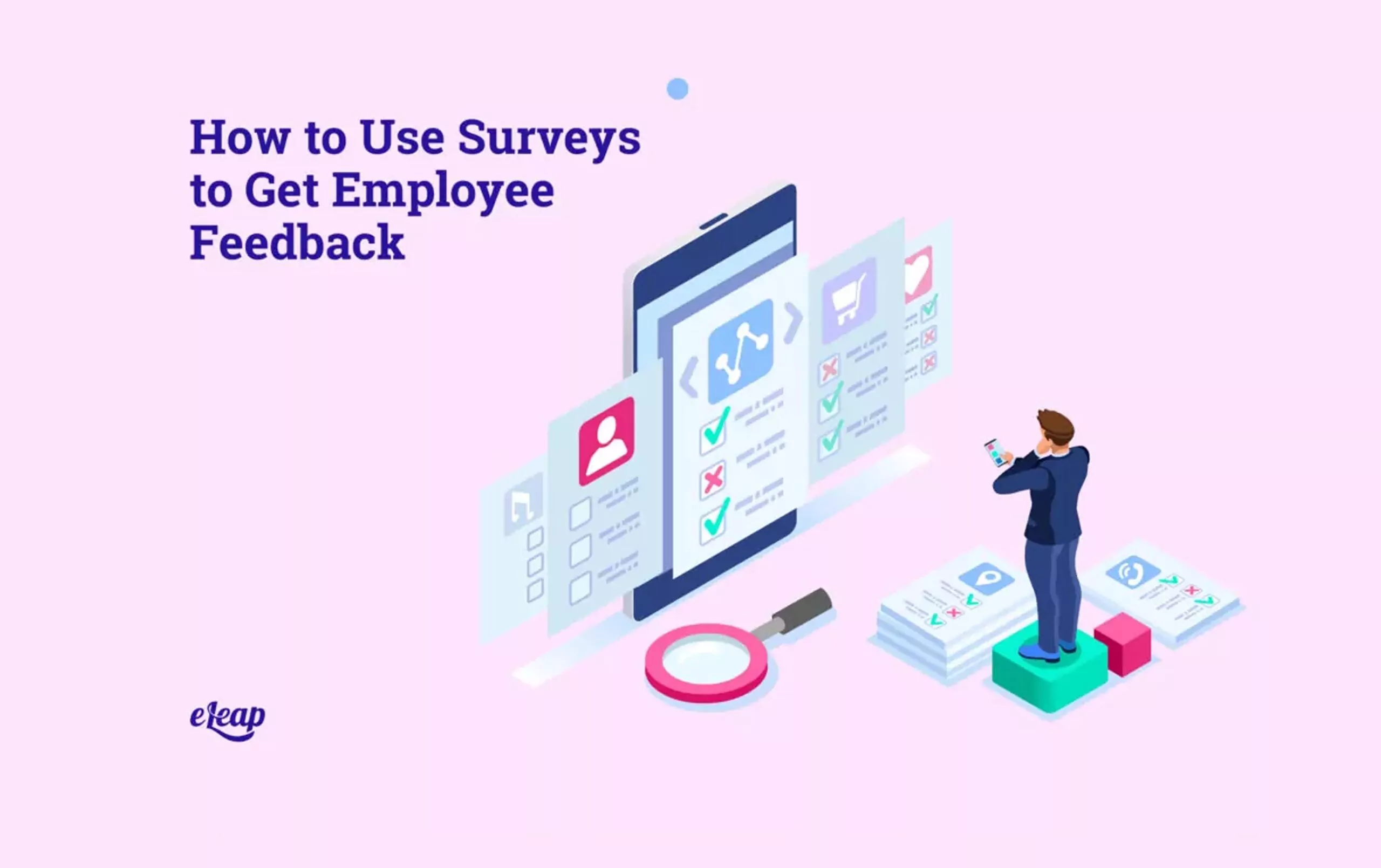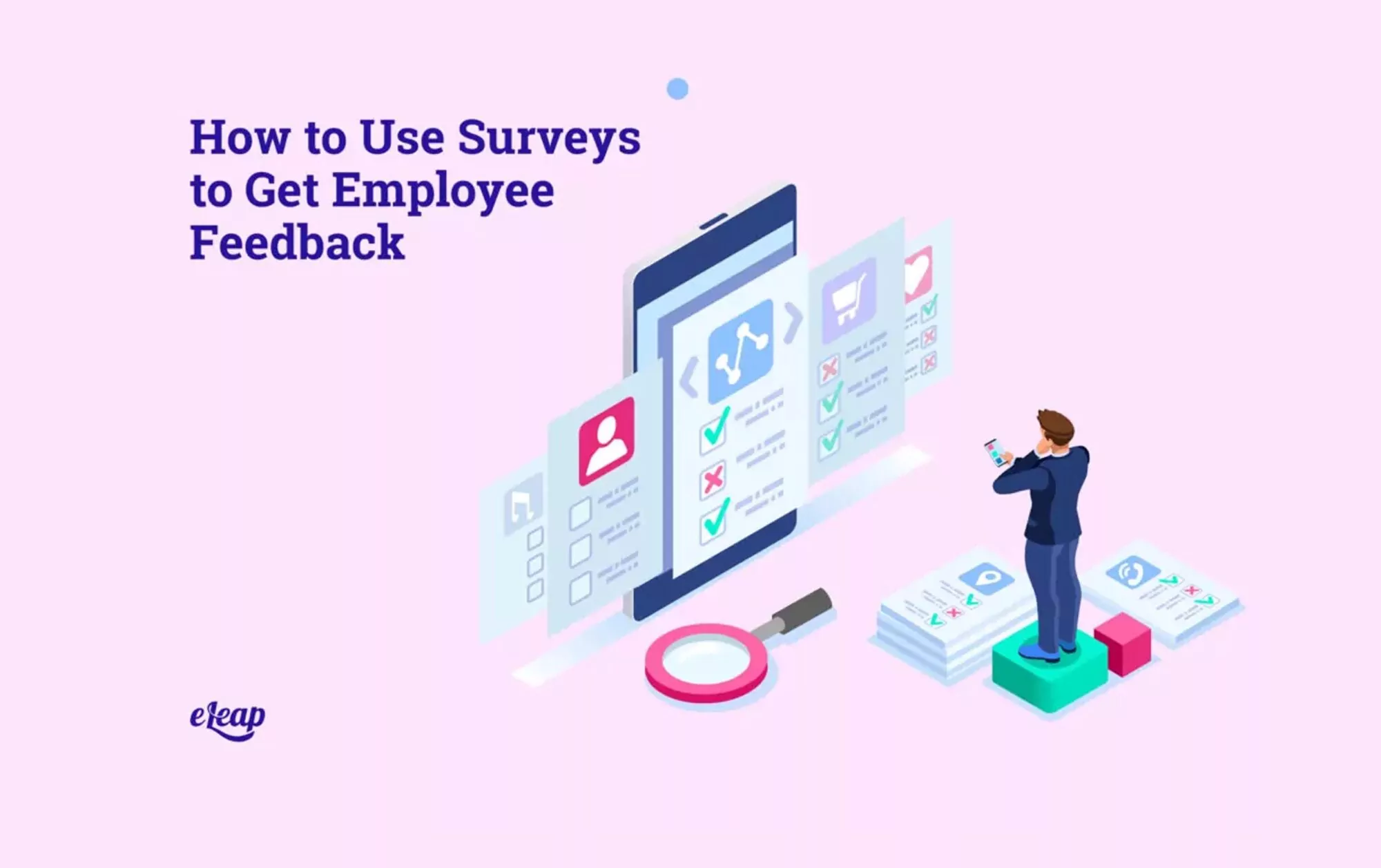How to Use Surveys to Get Employee Feedback

Too often, performance management flows downhill. Managers observe employees, and then give feedback during one-on-ones to improve performance and change outcomes. However, that one-way flow is detrimental and can create disengagement.
To build an engaged workforce, you must listen to what your employees are saying. Doing so shows them that they are valued and that leadership cares what they think and feel. It can also lead to much-needed improvements in areas that might not be on your radar.
How do you get that feedback, though? Employee surveys provide a simplified way to build engagement, show employees that what they think and feel matters, and to gain access to critical insights that can help you build a stronger, more resilient organization. How do you use surveys, though?

What Is the Point of Employee Feedback Surveys?
Employee feedback surveys have several key points. However, at least for management, the most important point is that they deliver critical information that allows you to evolve your organization into something better in terms of performance, culture, employee support, and its ability to compete within the industry. They can also shed light on things like the effectiveness of internal processes, whether it is actually adhering to your stated ethics, and how well it is achieving its mission.
What Benefits Do Employee Surveys Offer?
While employee surveys can provide access to critical information, they can also deliver more tangible benefits, including:
- Improved employee engagement
- Improved employee performance
- Improved morale across the organization
- Improved communication
- Improved leadership
- Enhanced sense of purpose and meaning
- The opportunity to identify problems where they are not expected
Tips for Creating Effective Employee Surveys
As you can see, surveys can be invaluable tools not just in performance management, but for achieving many other mission-critical goals. However, it’s crucial to understand that there is no one-size-fits-all approach that will work here. To leverage the benefits offered by employee surveys, you will need to know and follow a few important tips.
Mix It Up
Don’t try to cram all your questions into a single survey. Employees are likely to shy away from or shut down while completing very long surveys. So, how long is too long? There’s no hard and fast rule. Ideally, employees should be able to complete the survey within a relatively short time. To achieve that, follow these tips:
- Keep the survey short – no more than 20 questions at the very most.
- Keep the survey as focused as possible. Resist the urge to create surveys that cram in questions about every facet of business performance.
- Create multiple surveys focused on different aspects of the business and the employee experience.
Set Goals
This tip connects to and builds on the information in the previous one. Set goals for each survey you use. Every question should have a defined purpose, and that should feed into the overall goal of the survey itself. This lends itself well to creating focused surveys that shed light on targeted areas and allow you to take informed, immediate action.
How do you set goals for employee surveys? Simply define what information you’re seeking and why it matters. For instance, are you attempting to define weaknesses within in-house processes? Are you trying to measure employee engagement under a particular manager or within a specific department? Are you trying to identify areas where improvement is necessary within the wider organization?
Set goals, focus the questions on achieving those goals, and then use the feedback provided to propel the organization towards achieving those outcomes.
Know Your Target Audience
While some surveys can be sent to every employee, it is important that you set focus groups for many of them. Attempting to survey everyone within the organization generally results in information overload, takes up massive amounts of time, and yields results that can often be replicated by surveying specific employee groups instead.
However, you must understand the groups you will be surveying. Each group will have different needs, expectations, and desired outcomes. For instance, surveying the accounting department will require a different approach than surveying mailroom employees in many cases. Yes, broad-based questions will be largely the same, but don’t lose sight of the fact that each group of employees can shed unique insights, but only if you tailor your questions to them and their specific experiences within the organization.
Know the Types of Employee Surveys
Building on the previous tip, let’s explore some of the various types of employee surveys that can be used:
- New Employee Surveys: Sheds light on your onboarding process, early performance management efforts, goal setting, and more.
- Employee Engagement Surveys: Helps you understand the level of employee engagement, breakdowns, and what can be done to change things.
- Pulse Surveys: Short, fast dives into what’s driving the organization and employee performance in the immediate term. These help determine employee satisfaction and to track progress on important initiatives.
- Stay Interviews: These surveys are given to top performers and help you retain key talent.
- Manager Surveys: Get critical feedback from managers about their day-to-day experiences. You can also get feedback from employees about their managers.
Anonymity Matters
This is perhaps the most overlooked yet important tip in using employee surveys. Make them anonymous. Sure, it can lead to frivolity or employees pursuing personal grudges. However, it also encourages open, honest feedback.
When employees know that what they say cannot be held against them, they will open up and provide you with much more accurate feedback than if they feel that things they say might come back to haunt them. Guarantee anonymity with your surveys and you might be surprised at the insights and information they yield.
Surveys Build a Stronger Organization
In the end, surveys provide you with access to the most important asset of all – information. With the right approach, knowledge of each audience segment, and the right goals set, it becomes possible to build a stronger, more resilient organization, improve employee performance, and bolster engagement across the board.